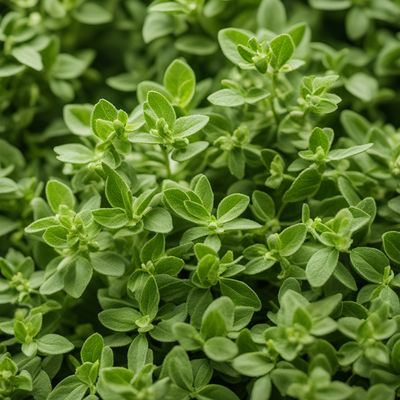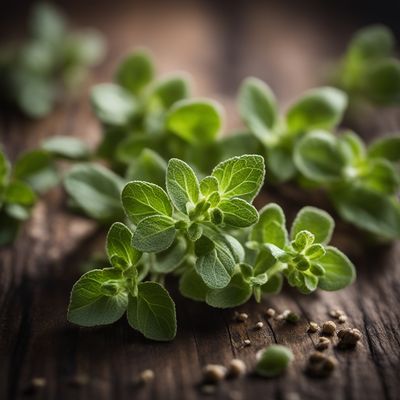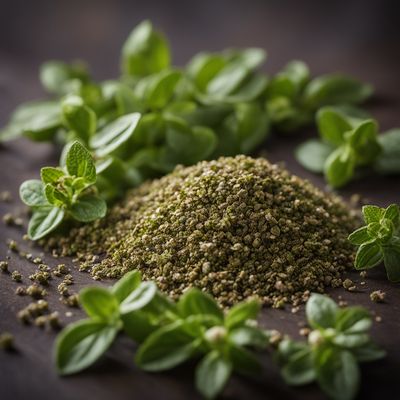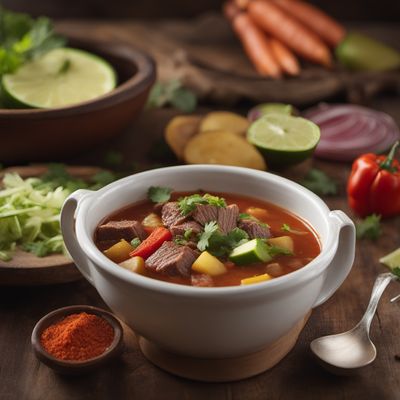
Ingredient
Winter savory
Savoring the Season: Exploring the Delights of Winter Savory
Winter savory is a perennial herb with small, dark green leaves and a strong, peppery taste. Its texture is slightly coarse, and the leaves are often used dried to intensify their flavor. This herb pairs well with hearty meats, stews, and bean dishes, adding a savory punch to winter comfort foods.
Origins and history
Winter savory has a long history of culinary and medicinal use. It has been cultivated since ancient times and was highly regarded by the Romans for its aromatic and digestive properties. In traditional medicine, winter savory was believed to have various health benefits, including aiding digestion and relieving respiratory ailments.
Nutritional information
Winter savory is a good source of vitamins A and C, as well as minerals like iron and calcium. It is low in calories and contains beneficial compounds such as antioxidants and essential oils.
Allergens
There are no known allergens associated with winter savory.
How to select
When selecting winter savory, look for fresh, vibrant leaves that are free from discoloration or signs of wilting. Opt for leaves that have a strong, aromatic scent. Dried winter savory should be stored in airtight containers away from light and moisture.
Storage recommendations
To maintain the freshness and flavor of winter savory, store fresh leaves in a plastic bag in the refrigerator for up to a week. Dried winter savory should be stored in a cool, dark place in airtight containers to preserve its potency.
How to produce
Winter savory can be easily grown in well-drained soil and requires full sun exposure. It is a hardy herb that can withstand colder temperatures, making it an excellent choice for winter gardens. Regular pruning will help promote bushier growth and ensure a continuous supply of fresh leaves.
Preparation tips
Winter savory can be used in a variety of dishes, including roasted meats, stews, soups, and bean dishes. It pairs well with other herbs like thyme, rosemary, and sage. Additionally, winter savory can be infused into oils or vinegars to add a savory kick to dressings or marinades.
Culinary uses
Winter savory is commonly used in Mediterranean and European cuisines. It is a key ingredient in traditional French herbes de Provence and Italian seasoning blends. Winter savory is also popular in Balkan and Eastern European cuisines, where it is used to flavor sausages, stews, and roasted meats.
Availability
Winter savory is commonly available in Mediterranean countries, such as France, Italy, Greece, and Spain. It can also be found in specialty stores or online retailers that offer a wide range of herbs and spices.
More ingredients from this category

Mastic thyme
The Fragrant Herb: Unveiling the Aromatic Delights of Mastic Thyme

Lemon savory
The Zesty Herb: Lemon Savory and its Citrusy Twist

Cretan oregano
The Fragrant Herb of the Mediterranean

Oregano
The Herb of Mediterranean Delights

Creeping thyme
The Fragrant Delight of Creeping Thyme

Lemon thyme
The Zesty Herb

Thyme
The Fragrant Herb: Thyme

Marjoram
The Fragrant Herb: Marjoram

Syrian oregano
The Exotic Herb: Syrian Oregano

Summer savory
"The Herb of Warmth and Flavor"
Recipes using Winter savory » Browse all

Lički Lonac - Traditional Croatian Meat and Vegetable Stew
Hearty Delight: A Taste of Croatia in Lički Lonac

Crispy Pork Rinds with Thai Spices
Thai Spice Infused Crunchy Pork Delight

Roman-style Sweet and Sour Pork
Tangy Pork Delight: A Roman Twist on Sweet and Sour Pork

Kashmiri-style Vargabéles
Kashmiri Delight: A Spiced Twist on Vargabéles

Caldo de Fandango del Valle
Mexican Fiesta Soup

Pichi-pichi with Coconut and Cheese
Coconut Delight: Pichi-pichi with a Cheesy Twist

Four Cheese Pizza with a Chinese American Twist
Cheesy Fusion: Chinese American Four Cheese Pizza

Paneer Amritsari
Spiced Delight: Paneer Amritsari - A Flavorful Indian Delicacy

Salvadoran-style Paneer en Crema
Creamy Paneer Delight: A Salvadoran Twist on Indian Shahi Paneer

Puerto Rican Copús with Plantains and Sofrito
Tropical Delight: Puerto Rican Copús with a Twist

Lombard-style Pork and Vegetable Stew
Hearty Lombard Pork Stew with Seasonal Vegetables

Achari Paneer Tikka with a Twist
Spicy and Tangy Paneer Tikka Infused with Aromatic Pickling Spices